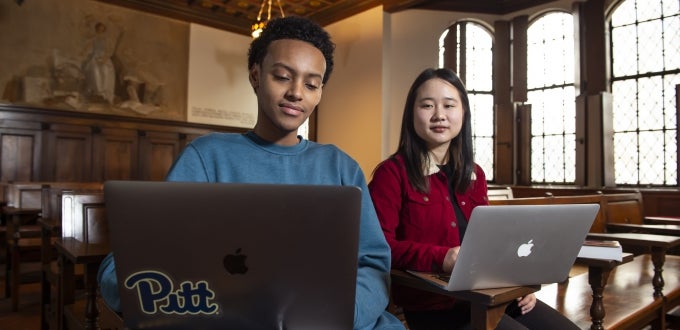You are here
Gen Z Tech Trends

Gen Z really are the Zoomer generation, given how much time they’ve spent in online classes and events in the last year and a half! This generation is tech savvy, self-motivated, and always connected. While you might not share the habits and preferences of today’s students, it’s important to understand how their digital habits shape the way they interact with you.
Search-First Approach
Today’s students are just as curious and engaged as previous generations, but they are used to finding nearly everything online. Reaching out in person is a last resort for many. Rather than reach out for tutoring, call an office for information, or simply ask a professor a question, they’ll try to find the information on their own first.
Recommendation: Put it online, where it’s easy to find.
Make sure your Canvas page or departmental website is well organized and easy to search. Place forms, syllabi, schedules, grading rubrics, departmental contacts, and other important information online. If a form requires detailed information, tell them where to find it. Provide recommended videos, readings, or websites to help struggling students practice on their own. Help students help themselves!
Tech-Standard Mentality
Today’s students have never known a world without advanced tech. Streaming and YouTube has replaced traditional TV. Their cell phones have always been smart. Shopping, buying tickets, getting help, completing forms, finding directions—they expect all those things to be available online, in real time. This is not seen as a mere convenience; it is their baseline expectation. They may choose not to engage at all if their interactions aren’t digital and user-friendly.
Recommendation: Explore digital alternatives.
If a pandemic can be said to have a silver lining, then digitizing paper processes has been it. Now that the University has returned to in-person operations, students expect that online processes will remain available. Allow students to turn in papers and assignments electronically. Make forms able to be completed on your website and searchable on myPitt. If you have a process that remains paper-based, contact the Technology Help Desk to explore whether a technical solution can be developed.
Apple Mobile, Windows Laptops
In the U.S., the smartphone market is evenly split between Apple and Android. But if you break that down by age, the picture looks different. A large majority of Pitt students have iPhones. The OS preference is different for laptops and desktops, however—a majority of students have a Windows PC. As smartphones become more powerful and 2-in-1 laptops become more common, tablets aren’t nearly as popular, although iPads are the tablet of choice for students who still use them.
Students access University services on their smartphones as often as via their computer. Using a laptop vs. a phone has as much to do with where they are and what device they have easy access to as it does with what they are doing. While they may not be eager to type a paper on a smartphone, their texting skills lend themselves to performing some pretty complex tasks on a mobile device.
Recommendation: Consider various platforms and operating systems.
When you test how a site or service works, try it on both a phone and a laptop. More specifically, be sure to use an iPhone for mobile testing. Also, when considering using an app or service in your class, having a mobile app available is a big plus. (Check out the apps available at the Pitt App Center.) Any site and service you ask students to use should have a mobile-responsive website design.
Tech Savvy, but Not a Trouble-Shooter
Many students have been using technology since pre-school, which makes their learning curve pretty short. Most young people are confident with logging into an unfamiliar app and figuring out how it works. But don’t assume that students can provide their own tech support. When things don’t work the way they expect or the instructions don’t match what happens on their device, they can get just as stuck as the rest of us. Bad user interfaces that aren’t intuitive can stymie users of any age!
Recommendation: Give instructions and demos.
Provide basic instructions for any app or service you ask students to use, including the steps for how to log in, get to the specific module, and perform the tasks you ask them to complete. Provide links to Help resources, such as user documentation or video tutorials from the manufacturer or Pitt IT’s How-To Documentation. Consider leading students through downloading the app and getting started during the first class session. Direct students to the Technology Help Desk for help with University-supported apps.
Attracted to Cutting-Edge
Students want to use the latest software in their field, from artists and teachers to engineers and scientists. According to a Dell poll, 80% of students aspire to work with cutting-edge technology and 91% say technology would influence their job choice. While they expect to be introduced to new IT tools on the job, they also want their resume to stand out based on the tech they have already used.
Recommendation: Expose students to new tech.
Check out all the software available in the Student Computing Labs, and create assignments that use advanced tools like LabArchives, BioRender, Adobe Creative Suite, or statistical software. Consider creating a customized “sandbox” working environment using Azure Lab Services. Show students how you use technology in your own research or work.
Zoom Ahead
Pitt students are bright, motivated, and ready to take on the world. Understanding their technology habits can help you engage with them more productively and efficiently. Meet students where they are with a tailored tech perspective.
-- By Karen Beaudway, Pitt IT Blogger